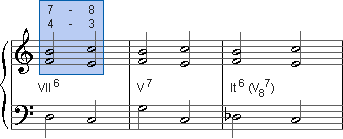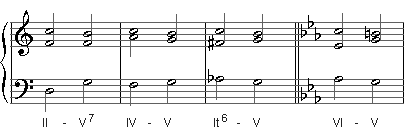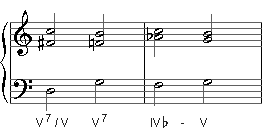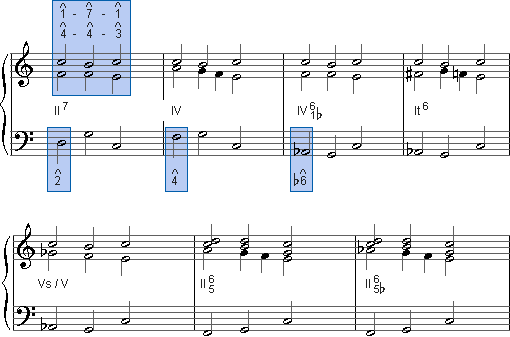Predominants - Musiikin teoria 1
Predominants
Predominants in music precede and prepare dominants. In the functional harmony theory based on Hugo Riemann's works, the main functions are: 1. tonic (T); 2. dominant (D), a fifth up from the tonic; and 3. subdominant (S), a fifth down from the tonic. According to Riemann's model, functions T - S - D – T follow each other in music; in scale degrees, for example, I - IV - V – I.
Harmonic function can also be illustrated through the degrees of a key. The dominant function is associated with degrees 





Predominant functions precede dominant functions. The typical scale degrees are II7 and IV, both including degrees 1 and 
Other predominant chords are VI in a minor key and augmented sixth chords leading to V. When moving to the dominant chord, the tonic falls in all chords on the leading note forming a tritone.

V/V and the modal IV can be considered predominant chords as well:

In traditional scale degree analysis, the subdominant II and IV degrees are "far apart" from the dominants of the dominant, represented by V/V and It6. Including notes from a certain key only, the former are usually considered to illustrate simpler chord relations.
The example below shows a selection of predominant chords with typical voice leading patterns. The first bar also shows parts building on the degrees of the key (1-7-1 and 4-4-3).

